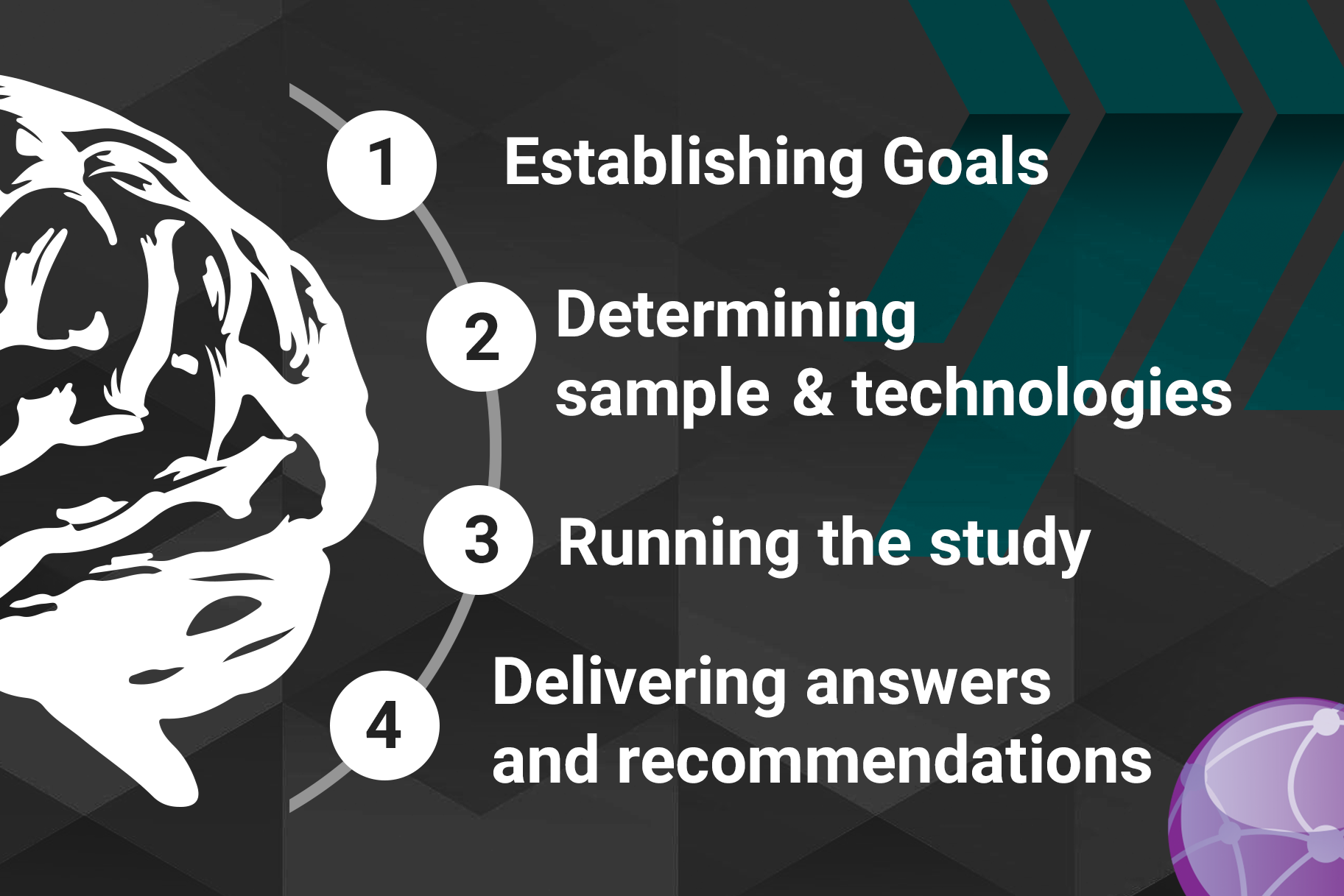– Adriana González Gil
We have talked a lot about our neuroscience laboratory and about the benefits of including neuromarketing and scientific tools like electroencephalography or GSR into your company’s strategy, especially during these turbulent times, but it might not be clear enough what exactly is happening in a project and what it’s implications are.
1. Establishing goals:
First of all, let’s remember that this is the next step further into market research but it does indeed continue to be market research. So the first step we have to take before starting a neuromarketing study is to define the goals of the study. Do we want to measure our packaging against the competition? Do we want to know what failed in previous advertising campaigns as to not repeat our mistakes? Do we want to know if our brand is seen on the shelves? These goals are set with the company and they are going to determine everything, from the sample of your consumers that is going to be studied to the technologies used; whether it is a screen-based experiment in our laboratories or if we need to study your consumers’ behavior in the stores or streets.
The goals arise from a need that already exists in the company and that we can help solve. For example, if you are doubting between two product designs it will definitively be easier, safer and cheaper to study those options through neuromarketing, than to invest in launching the product and paying for a communication campaign without knowing for sure. Maybe this need is “I don’t know why this line of products is not performing as well as the others” or “I’m losing market share to my competition”. In any case, we do personal meetings with the company to understand what exactly needs to be studied.
2. Determining and getting the sample of people to study:
After we determine the goals of the study, we focus on getting an in-depth understanding of the relevant people to perform the study on. Do we need to study the brand’s consumers in general or just a segment of it? Do we need to understand separately the behavior of each segment? In any case, we establish a very specific profile of the people to be studied and the sample size needed. Normally, it would be around 30 people.
After this, depending on each company’s preferences, we would either acquire the people from the company itself (in case they already do some sort of research and have a database of clients willing to participate in studies) or we would contact a specialized agency to acquire them.
3. Determining the technologies to be used:
This is a direct consequence of step 1. The kind of stimulus to be studied (Ex. an app or a secondary placement) will have a big influence on this decision, as well as the kind of behavior that we want to understand. Do we want to understand preferences and motives or just know if we’re visible?
After establishing the goals with the company we will suggest the technologies and give detailed examples of the kind of metrics and information that we will get out of them.
4. We run the experiment and deliver the results:
This is entirely in our hands. We will provide pictures, videos, graphics, and an in-depth report and analysis, but the most important part is the series of recommendations that we will give.
A lot of people wonder what they get out of the research. They get answers. Remember the questions we asked at the beginning? The most important part of the report is the answer to these queries. If you were wondering why one line of products was under-performing we will tell you, with the exact scientific evidence to support it, if it was the packaging, the price, the product itself or a combination of those factors, and we will tell you why and how to improve it. Since normally we compare different stimuli we will give you information on what works and what doesn’t not only for you but for your competition so you know what to do and most importantly, what not to.
5. Optional step:
After you apply the changes we suggest (some companies apply all of them, some decide to go for a mid-point option), we can re-test the new alternative to prove it’s efficiency and tell you with data how much it improves the brand awareness, engagement or shopping intention.
If you want to know more about how this can help your marketing actions, contact us at adriana.gonzalez@sferabusiness.ro and we’ll send you examples of our previous success cases, study your case and present you with a proposal.

